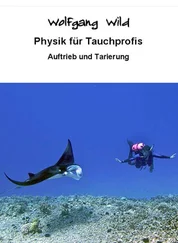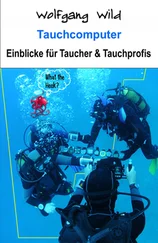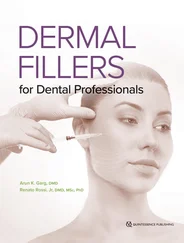Bottom line: A pure comparison of dive table no-stop times is of no substantial value for the diver – and this is equally true for dive computers. Divers need to know much more about no-stop times, in particularly where they originate from and how they were tested (i.e. validated).
An example for reliably developed, validated and documented dive tables – the Recreational Dive Planner (RDP)
From a diver’s perspective there is little to complain about the development and validation of the Recreational Dive Planners (RDP) by DSAT (Diving Science and Technology): The mathematical equation which is used to calculate absorption and desaturation has been worked out in a time consuming procedure (for details please see the documentation referenced below); then extensive “dry dive” testing followed in the hyperbaric chamber under medical supervision and guidance; and if such dry dives produced bubbles that could be heard and documented by the use of Doppler ultrasound technology, exceeding a beforehand defined grade, the coefficients of the mathematical equation were adapted.
Only then came the next, ultimate step in the validation process of the model: 228 real “wet dives” in the Puget Sound close to the Canadian border in the west of the USA, next to Seattle (yes, it’s a bit fresh there under water, around 12°C/54°F in summer, i.e. the test dives are to be regarded rather strenuous than just relaxing).
The test subjects were young and old divers, male/female, with much/little dive experience, with quite a bit bioprene / athletic / slim – a representative average, so to say. The dives were conducted over several days, incl. multilevel dives and repetitive multilevel dives.
After each dive the test subjects were checked by the means of Doppler ultrasound if any bubbles could be heard, and only after no problems could be stated any more the mathematical model (i.e. the algorithm) was released by DSAT.
Result of the lengthy validation process:
“No cases of decompression sickness were encountered in any test, either in the hyperbaric chamber or in open water. … Doppler detectable bubbles were found in 4% of the profiles. In subjects who did deep knee bends during compression, bubbles were found in 12% of the profiles. The Doppler Grade in the subjects while resting was almost exclusively Grade 1. The after-exercise grades were mostly 1 and 2, with one subject having a Grade 3. Some of these grades could have been caused by objects in the bloodstream other than bubbles, but as mentioned previously, when in question, it was resolved in favor of gas bubbles and a higher grade.”
Source: Richardson, Drew, The Recreational Dive Planner: History and Development, The Undersea Journal, First Quarter 1988, p. 8
Here the “Doppler Bubble Grade” scale from 0 to 4 according to Dr. Merrill Spencer, 1974 (Source: ibid.)
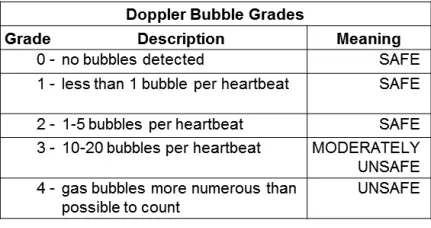
The total number of test dives (both hyperbaric chamber and open water) which were conducted and evaluated was 911. The validation was done externally, that means: not by DSAT itself, but rather under the direction of Dr. Michael Powell at the Institute of Applied Physiology and Medicine (IAPM) in Seattle, USA.
Today the complete final documentation is available for free download (link see bibliography):
Diving Science and Technology (DSAT), Development of no-stop decompression procedures for recreational diving: The DSAT Recreational Dive Planner (1994)
A preliminary version which had been mailed for information and review to over 800 experts in hyperbaric medicine, PADI instructor development professionals and various institutions appeared already end of 1997 under the title:
Diving Science and Technology (DSAT), Recreational Dive Planning … The Next Generation – New Frontiers in Hyperbaric Research; Santa Ana, California (USA) 1987
The following snapshot from the 1994 DSAT documentation (p. 27) shows a diver in the hyperbaric chamber trying by means of a rowing machine to drive as many potential bubbles out of any tissue niche where the might have been hiding. Only after these efforts and additional knee bends Doppler was used.
Real, wet test dives were only conducted after successful dry dives in the hyperbaric chamber.
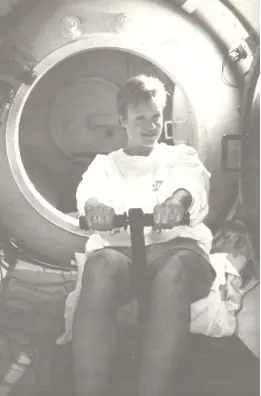
Without going too deep into that (thanks to the free download possibility everything can be studied in detail today) only a few more aspects in bullet point form which might be of most interest for the reader of this eBook:
• As the development of the mathematical equation had been financially sponsored by PADI (Professional Association of Diving Instructors), they had secured the exclusive rights for PADI to develop and distribute a new dive planner for recreational divers based on the DSAT findings; so, in 1988 the Recreational Dive Planner (RDP) was launched. With the RDP divers had for the first time a dive table which does not penalize the recreational diver with too short no-decompression times and limits. Just to remember: the until then traditionally used US Navy tables had never been thought for recreational diving (and for female divers not at all). Some other dive tables reacted on the RDP by shortening their (somehow created) no-decompression limits to increase their safety margin.
• Later, DAN and PADI subjected the RDP to further testing: 4 (four) dives daily during 6 (six) consecutive days; these dives were conducted in the controlled environment of a hyperbaric chamber, i.e. dry dives; after each dive the 20 divers were evaluated for bubbles by the use of Doppler ultrasound. Result after 475 dives: „No decompression sickness and minimal detectable bubbles.“ (Richardson, Drew, How Much Diving Is Too Much?, The Undersea Journal, Second Quarter 1990, p. 14)
• Because DSAT had released the algorithm for free use (except for the production of dive tables), several smart diving equipment manufacturers seized the chance, ordered together the production of a chip resp. microprocessor and had it installed in their newly developed dive computers; this was truly smart because they saved a lot of development costs. As far as the author of this eBook is informed, in the USA these manufacturers were Dacor, Oceanic, Sherwood, and US Divers (even though not all dive computer models of these companies were equipped with the DSAT algorithm). In this way they had a dive computer which was calculating both saturation and desaturation with an extensively validated mathematical equation.
• In the RDP 14 theoretical tissues or “compartments” are used: 5 – 10 – 20 – 30 – 40 – 60 – 80 – 100 – 120 – 160 – 200 – 240 – 360 and 480 minutes (the term “compartment” will be discussed later). As “controlling tissue” for the RDP finally the 60-minutes compartment was selected. A few points to the concept of a controlling tissue which are probably known by diving professionals and may therefore be skipped by them. All dive tables and dive computers which are based on a so-called “tissue-model” (see further below) use a specific controlling tissue which is defined as follows: this is the theoretical tissue, which came closest to its maximum but still safe gas-loading during a dive. The criterion for this closest margin meant for the development of the Recreational Dive Planner (RDP), as already shortly mentioned or, in other words, no Doppler audible bubbles which could have lead to DCS symptoms. Result for utilizing this concept in the development and validation of the RDP: “No cases of decompression sickness occurred in any test.” (DSAT, Recreational Dive Planning … The Next Generation – New Frontiers in Hyperbaric Research, 1987, Executive Summary, p. 4)
Читать дальше




